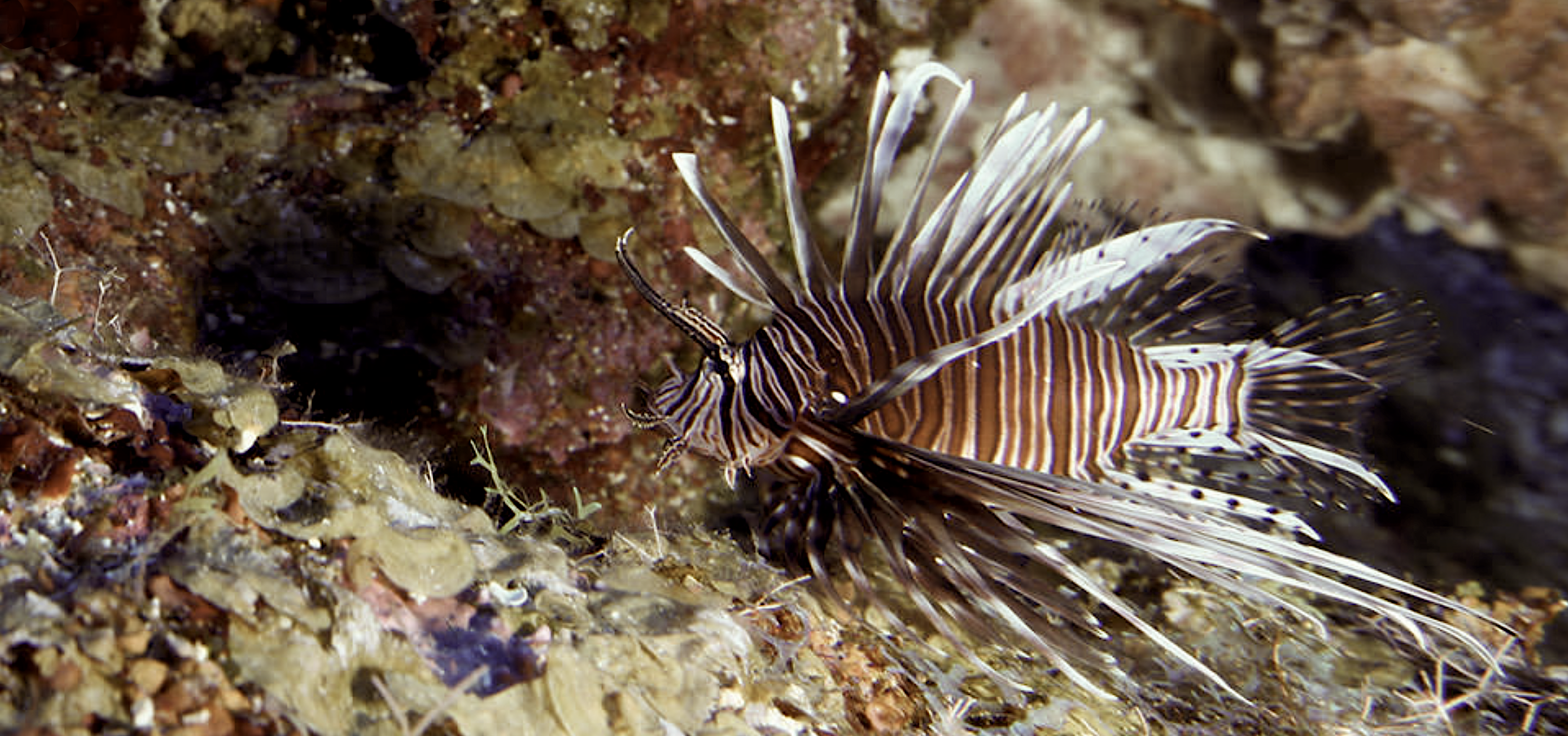What Affects the Success of Divers When They Try to Remove Lionfish?

Experience — and time of day — are key factors influencing the effectiveness of lionfish removal.
Research Need
The invasive lionfish now occupies many offshore natural and artificial reef sites in the U.S. South Atlantic, Caribbean, and Gulf of Mexico. As non-natives, these species have the potential to out-compete and perhaps displace native fish species from reefs, disrupting the aquatic food chain and the ecosystem.
While lionfish are likely here to stay, divers have made effective efforts at removal, suppressing the local population at least temporarily.
But the process and techniques by which divers systematically spear or trap (and thus remove) lionfish from reefs face challenges. Organizing, planning, and funding a successful lionfish removal effort is not as easy as it seems, given that resources are limited.
How do we ensure that divers’ efforts at removal are as successful and as efficient as they can be?
What did they study?
A team of scientists coordinated and evaluated lionfish removal efforts by scuba divers at 33 reef sites across the U.S. South Atlantic, Caribbean, and Gulf of Mexico from 2013 to 2019.
In addition to recording the number of lionfish that divers removed, researchers collected data on 10 other factors — such as diver experience and reef size — that might influence the efficiency of removal efforts.
What did they find?
Highly experienced divers who conducted lionfish removal during early morning and early evening hours were three times more efficient than inexperienced divers who attempted to remove lionfish during mid-day. (For purposes of this study, the highly experienced divers had rescue diver certification or an equivalent or higher certification, extensive lionfish removal experience, and more than 300 dives.)
Not surprisingly, divers were able to remove more lionfish from reefs when greater numbers of lionfish were present.
Lionfish behavior and the characteristics of their habitat had little impact on removal.
Anything Else?
Divers removed about 75% of all lionfish sighted across reef sites. Each reef in the study hosted, on average, 24 lionfish per acre.
The average size of lionfish was about 9 inches, with the largest being about 16 inches.
Divers spent, on average, about one minute and 18 seconds pursuing each lionfish.
So What?
Removal efforts by divers will not lead to complete eradication of lionfish on reefs — but repetitive removals can lower the numbers of lionfish and allow native species more opportunity to co-exist with lionfish.
With removal efforts expected to continue, this study provides a playbook for effective and efficient removal efforts in the region.
Reading
Alexandra C. D. Davis, Lad Akins, Clayton Pollock, Ian Lundgren, Michelle A. Johnston, Bernard Castillo II, Kynoch Reale-Munroe, Vanessa McDonough, Shelby Moneysmith, Stephanie J. Green 2021. Multiple drivers of invasive lionfish culling efficiency in marine protected areas. Conservation Science and Practice. e541. pp 1-17. DOI: 10.1111/csp2.541.
Funding: Banting Postdoctoral Fellowship; David H. Smith Conservation Fellowship; Florida Sea Grant, Grant/Award Number: NA10OAR4170079; Mote Protect our Reefs Grant, Grant/Award Number: POR-2011-30; National Park Service; NOAA Domestic Coral Reef Conservation Grant, Grant/Award Numbers: NA12NOS4820069, NA14NOS4820084; NSERC Discovery Grant; Sloan Science Fellowship.
Summary by Scott Baker.
Lead photo: lionfish, courtesy of NOAA.
The text from Hook, Line & Science is available to reprint and republish at no cost, but only in its entirety and with this attribution: Hook, Line & Science, courtesy of Scott Baker and Sara Mirabilio, North Carolina Sea Grant.
- Categories:



